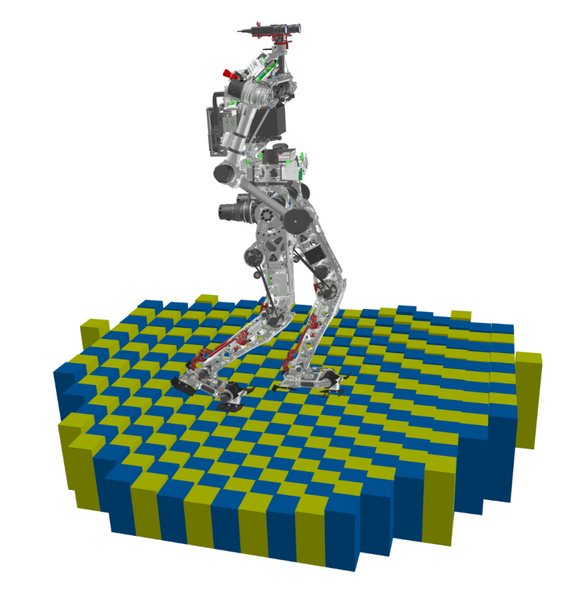Lola - Walking in Uneven Terrain
There have been remarkable advances in the technology of biped robots, enabling the most advanced machines to walk and run at relatively high speeds. Still, current bipeds are not capable of handling the large disturbances that would occur during the practical use of such machines and still have severe limitations in the generation of walking patterns in complex environments. Currently, these limitations appear to be more problematic than the fact that robots can not walk or run as fast in ideal laboratory conditions as humans can, since a central argument for legged locomotion is the supposed superiority to wheeled or tracked vehicles in rough terrain.
Therefore, the goal of this project is to research methods for improving the robustness and flexibility of biped robots. We view this research as a first step towards using biped robots outside tightly controlled laboratory conditions and proving the inherent superiority of legged locomotion in rough terrain. The project includes theoretical studies, numerical simulations and walking experiments using the biped robot Lola.
By “flexiblility” we mean the capacity of the robot to actually use a large portion of the robot’s physical capabilities. This is important, when stepping over or onto complex, previously unknown obstacles or when walking with very large steps. “Robustness” is the ability of the robot to recover from very large disturbances, due to external forces or errors in the environment model. This can only be achieved by large modifications of the originally planned motion of the system.

Software
Publicly Available Software Libraries developed within the project:
- lepp2 - Lola Environment Perception Package v2
- lepp3 - Lola Environment Perception Package v3
- HoLola - Holographic Data Visualization for Lola
- LolAR - Augmented-Reality Visualization for Lola
- ARVisualizer - Awesome Robot Visualizer
Acknowledgments
This research is supported by the Deutsche Forschungsgemeinschaft (German Research Foundation, grants BU 2736/1-1).
